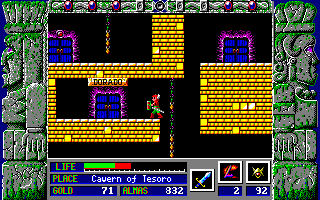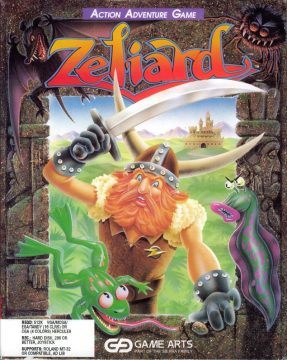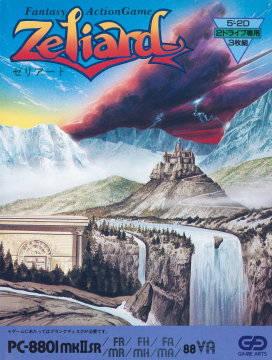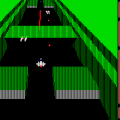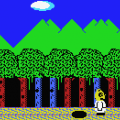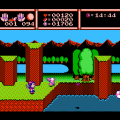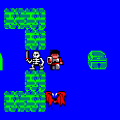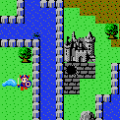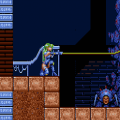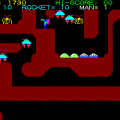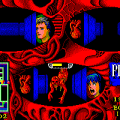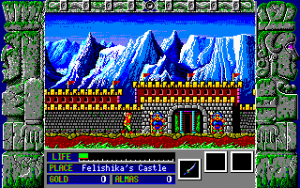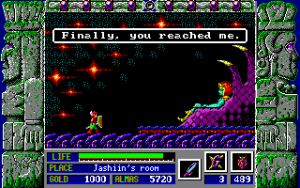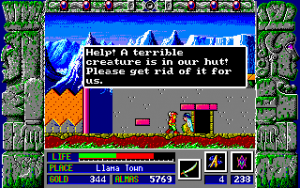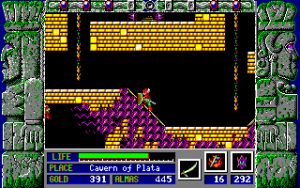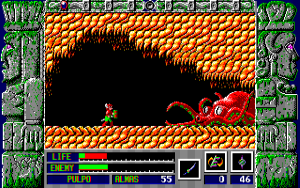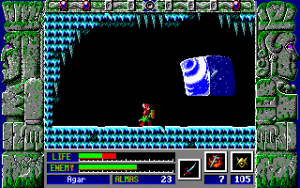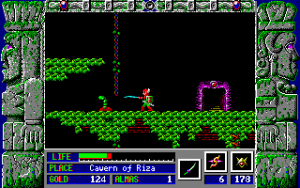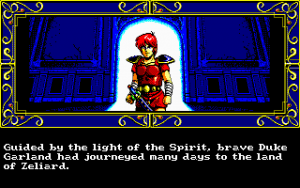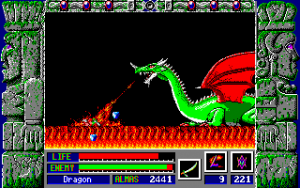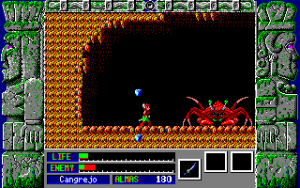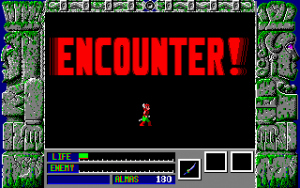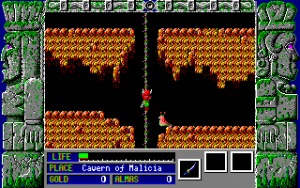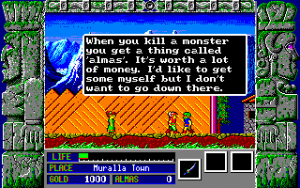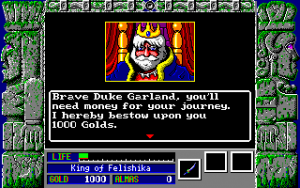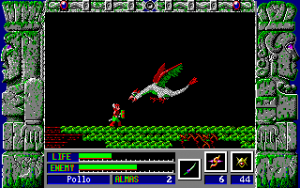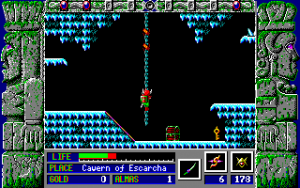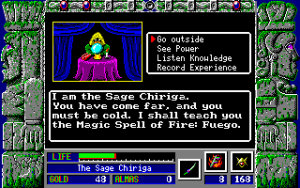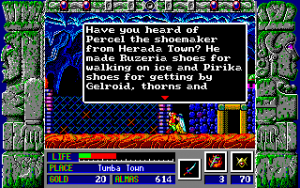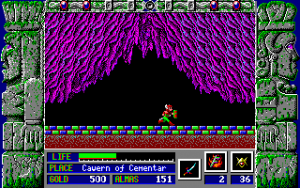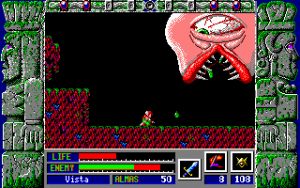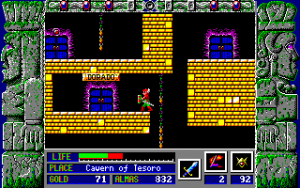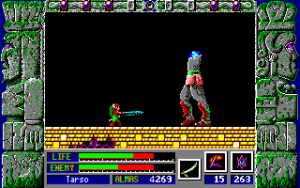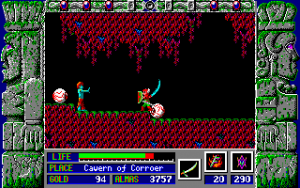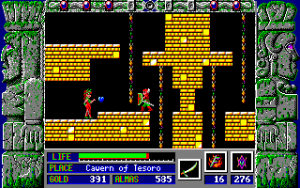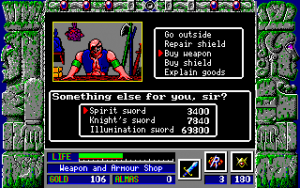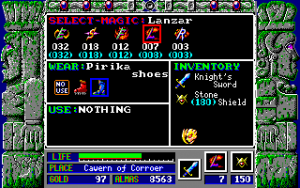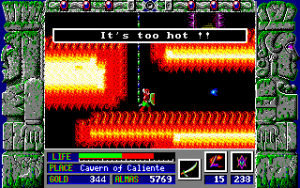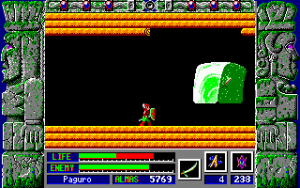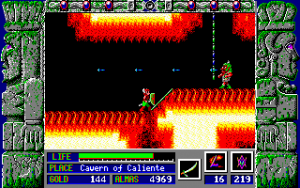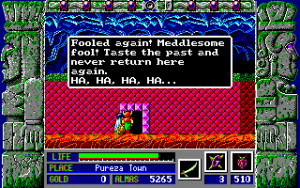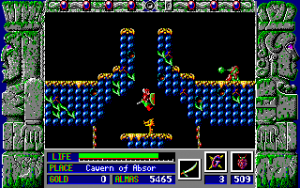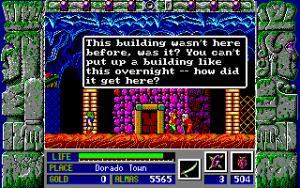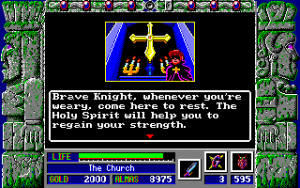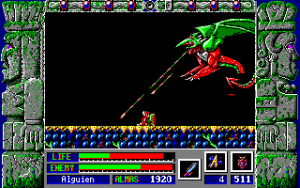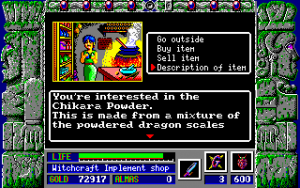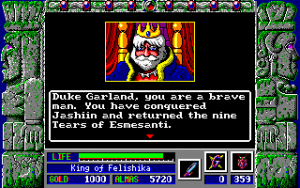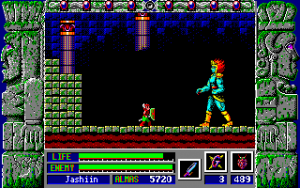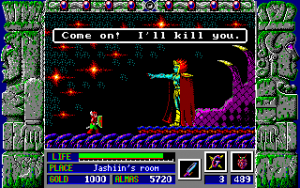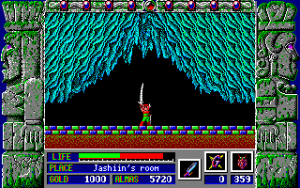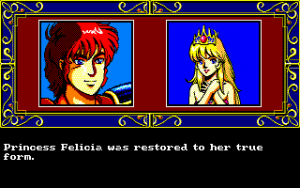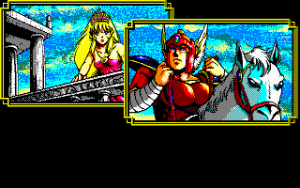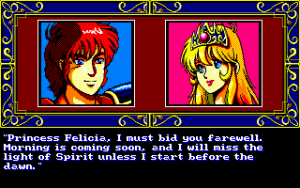In 1986 Ken Williams travelled to Japan to sell licenses to Sierra On-line games, and during the stay he acquired the rights from Game Arts to publish a MS-DOS port of their action platformer Thexder. In the coming years, Sierra would port a number of a Japanese games including three additional Game Arts titles: Fire Hawk:Thexder 2, the shoot-em-up Silpheed, and the action-RPG Zeliard. Common to all of these titles are that they are microcomputer games (and stayed on those systems with the single exception of a Thexder port for the Famicom) that play and feel a lot like console games. Zeliard is a side-scrolling action-RPG with a leveling system and a lot of focus on experience point grinding. It was Game Arts third game and their first RPG, and in many ways their first step towards their later RPG productions such as the Lunar and Grandia series. Zeliard was released more or less exactly in between two of the seminal examples of the genre, Zelda II (January 1987) and Ys III (1989), but has remained in the shadow of more popular games due to its computer exclusivity and relentless difficulty curve.
The story, presented in rich cutscenes, is a standard fantasy-RPG affair: a demon lord named Jashiin has been resurrected and conjured a cursed rain on the land of Zeliard that has turned the princess to stone and the land to desert. As the king laments his loss, the guardian spirit of Zeliard appears and explains that the demon lord can be defeated by collecting nine holy crystals from the underground. The next day, a stranger named Duke Garland arrives, and is tasked by the king to save the kingdom. The game consists of eight dungeons in which you need to find and defeat a boss monster that guards the crystal. Garland’s main weapon is a sword and each crystal will unlock a new secondary magic attack. In and between each dungeon is at least one town where you can level up, buy gear and consumables, get hints from townspeople and heal your character.
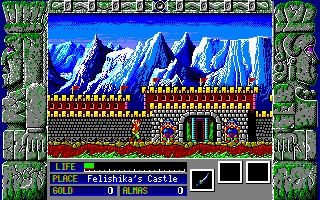
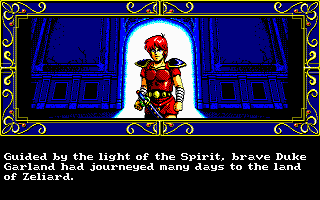
MS-DOS
Zeliard is infamous for its difficulty, and playing this game even past the first dungeon will require a lot of skill, practice and planning from the player. Enemies will eat away at your health and the game expects you to grind a lot to make any progress at all. The main loop thus consists of entering a dungeon, killing monsters to get experience points and Almas (the souls of monsters), return to town without dying, exchanging Almas for Gold at the bank, paying for healing at the inn and talking to the sage to see if you have enough experience to gain a level (which extends the health bar and increases the attack power). This is repeated until bit by bit you can survive further into the dungeon. Eventually you’ll find keys to open locked doors and get enough gold to buy better swords, shields and magic potions to take on the boss. After the second boss, the game starts to mix things up a bit by having you look for new items that allow you to pass previously impassable obstacles. Different towns will also have different Alma:Gold exchange rates, generally making money farming more laborious the further you play…
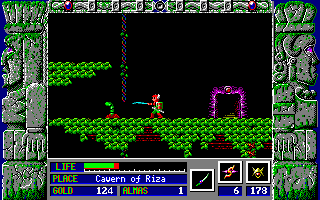
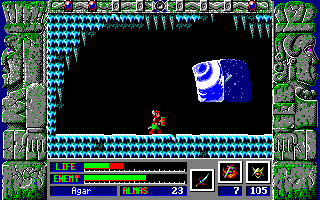
MS-DOS
The gameplay is complicated by the fact that the dungeons loop on the horizontal plane, meaning that if you walk in one direction you will eventually come back where you started. The dungeons also consist of multiple parallel caverns with similar tilesets that are connected by a myriad of different doors. Traversal in this game can thus quickly become very disorienting, and there are no in-game maps to help you; instead you are supposed to use the paper maps that came packaged with all versions of the game. While the first couple of dungeons can be cleared by memorization and deduction, during the later, much more complex levels it will become more or less necessary to have the maps in front of you while playing. Having to play this way requires more effort from the player, but does lend a sense of discovery and spelunking to the game that it would otherwise not have if there was an in-game map.
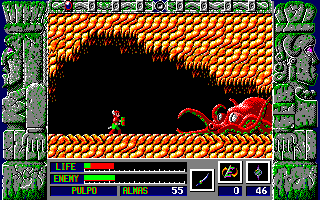
PC88
The controls are – sadly – what you would expect for a computer action-platformer: stiff and a little clumsy. They are not game-breaking bad, but can cause a lot of frustration and add unnecessary challenge to the already difficult game. The jumping is especially terrible, and trying to grab a rope or land on a moving platform requires a lot of practice. The platforming you are asked to do in the last three dungeons are in certain places just too hard for the available control fidelity, and you will likely need to retry tricky sections multiple times. There are also hardly any invisibility frames after taking a hit, unless you buy a shield to (partly) protect your front side. Still, it is easy to get stuck on an enemy sprite and have your health drained, as the shields have a separate health bar and will break when they reach zero. The smiths in towns can repair a damaged shield to full health for some gold, but broken shields are lost and need to be replaced for the original price.
It used to be common that Western ports were tweaked with elevated difficulty to prevent people from renting a game and beating it in a sitting. As such, many games from the 80s and 90s that Western players consider difficult might be easier in their original Japanese releases. Zeliard, however, is an example of the opposite: the MS-DOS port by Sierra was not only localized for English-speakers, but also features a handful of changes that tune down (!) some of the difficulty of the Japanese versions. For instance, enemies in general give more XP and collectibles when defeated, Alma:Gold exchange rates are more favorable, health can be regenerated by standing still in a dungeon, and when you die, you lose less Almas and even gain a little XP instead of losing it all. However, maybe as an attempt to balance the tweaks, when you die in the MS-DOS version you respawn in the first town and not in the last you visited as on the PC88/X1. Save games still start you in the town where you last saved, though, so reloading saves soon becomes crucial in the MS-DOS port. The port also adds some quality-of-life features such as a dedicated pause button, the option to change to speed of the game and support for multiple save files. In comparison to the Sierra port, the Japanese releases of Zeliard are masochistic experiences that require significantly more rounds of the grinding loop. For new players the MS-DOS version is clearly the version to play.
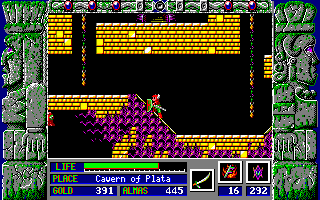
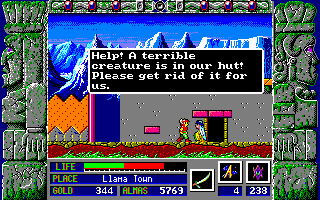
MS-DOS
On the highest graphics settings of the MS-DOS port, Zeliard looks decent for its age. The PC88/X1 versions look just slightly worse and have choppier scrolling. The music is one of the game’s biggest assets and sounds great on the AdLib Setting. The title screen music is especially banging, with the punchy bassline of the PC88 version possibly making it the best rendition. The PC88/X1 has digitized voices during the dialogue in the intro and in some shops, but the quality is not very good and it is understandable why it was not implemented in the English translation.
Playing Zeliard is a bit like taking on a new hobby: first you get intrigued and decide to try it out, then there is a learning phase where most attempts don’t go as planned, then you gain speed and you think you have nailed it but suddenly you hit a wall, lose energy, maybe drop it for a while, but might come back later drawn by its allure. With perseverance and some hard labor, Zeliard can become a very rewarding experience that truly feels like an adventure, but it is also understandable that not all players will enjoy putting in the effort. What could have been a classic of the genre is sadly held back by three big issues: the difficulty, the choppy controls and the disorienting level design. But if you can look beyond that, the MS-DOS port of Zeliard is certainly worth a try.
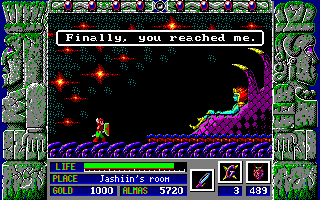
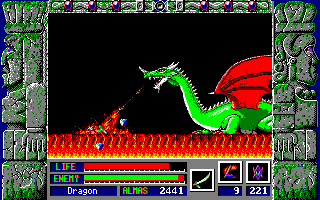
MS-DOS
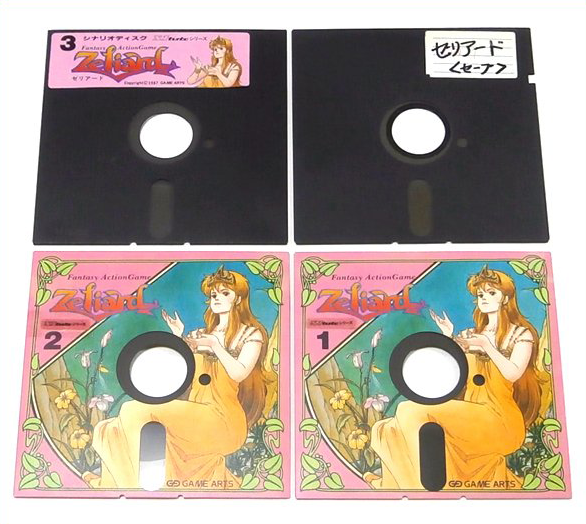
The Japanese floppies (here: X1) came with beautiful custom outsides. The user had to supply a fourth disk of their own (to which progress was saved) in order to run the game.
References and further reading
Manual for the MS-DOS game. Knowing the menu keys is crucial for playing the game.
http://www.sierrahelp.com/Documents/Manuals/Zeliard_-_Manual.pdf
An excellent English-language fan site that lists things to know before you start, as well as a pedagogic walkthrough.
https://zeliardgame.tripod.com/
An in-depth fansite for the Japanese version of the game
https://web.archive.org/web/20130326172019/http://www.geocities.jp/rip_gamer/zeliard/zel_top.html
A list of the numerous alterations made by Sierra when porting it for MS-DOS
https://tcrf.net/Zeliard_(DOS)
A “Upcoming”-feature on Thexder 2 and Zeliard in Sierra News Magazine Fall 1990 (p.18)
https://mocagh.org/sierra/sierranews-fall90.pdf
This was Josh Mandel’s first lead project at Sierra (credited as producer). He speaks briefly about Zeliard in this interview:
http://www.game-nostalgia.com/interviews/eboredom_mandel.htm
Screenshot comparisons
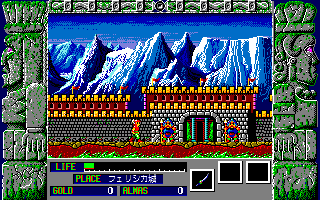
PC88
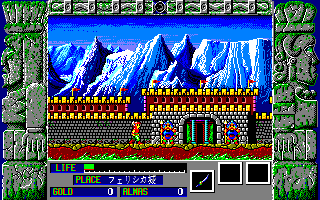
Sharp X1
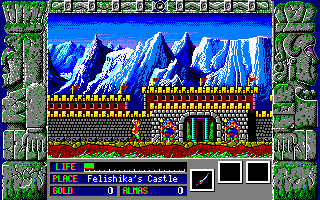
MS-DOS (MCGA, 64 colors)
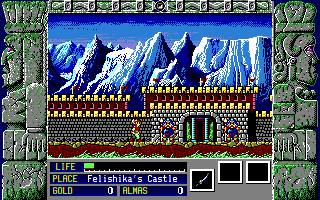
MS-DOS (EGA, 16 colors)
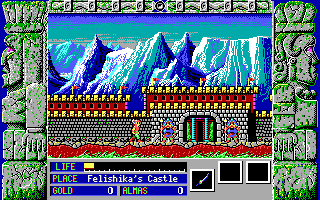
MS-DOS (Tandy, 16 colors)
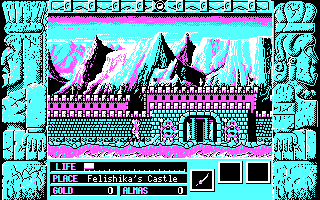
MS-DOS (CGA, 4 colors)
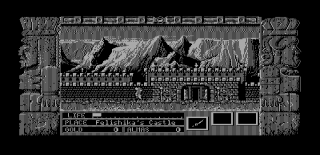
MS-DOS (Hercules, 2 colors)
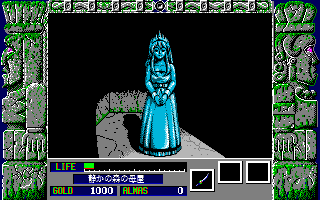
PC88

MS-DOS
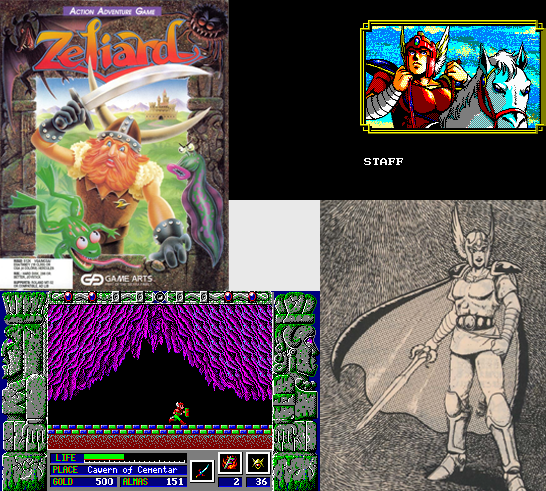
(MS-DOS cover, MS-DOS screenshots, Japanese manual)
Something also has to be said about the terrible western box art and its reinterpretation of the character of Duke Garland. The baffling choice to draw him as a Viking likely stems from his in-game sprite that seems to have a helmet with horns. However, the ending cutscenes show that these “horns” actually are feathers, but with the difficult of the game few Western players would have reached far enough to learn that. Japanese players would have seen the helmet in the manual, though.
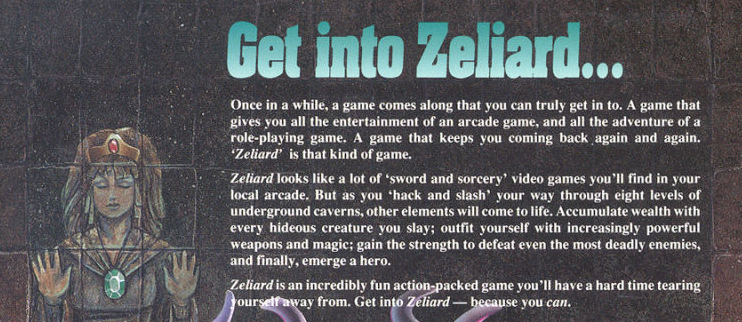
Speaking of the box of the Sierra port, the copy on the back has a tagline that is so amusingly anemic that they didn’t even bother to add an exclamation mark: “Get into Zeliard – because you can”.
